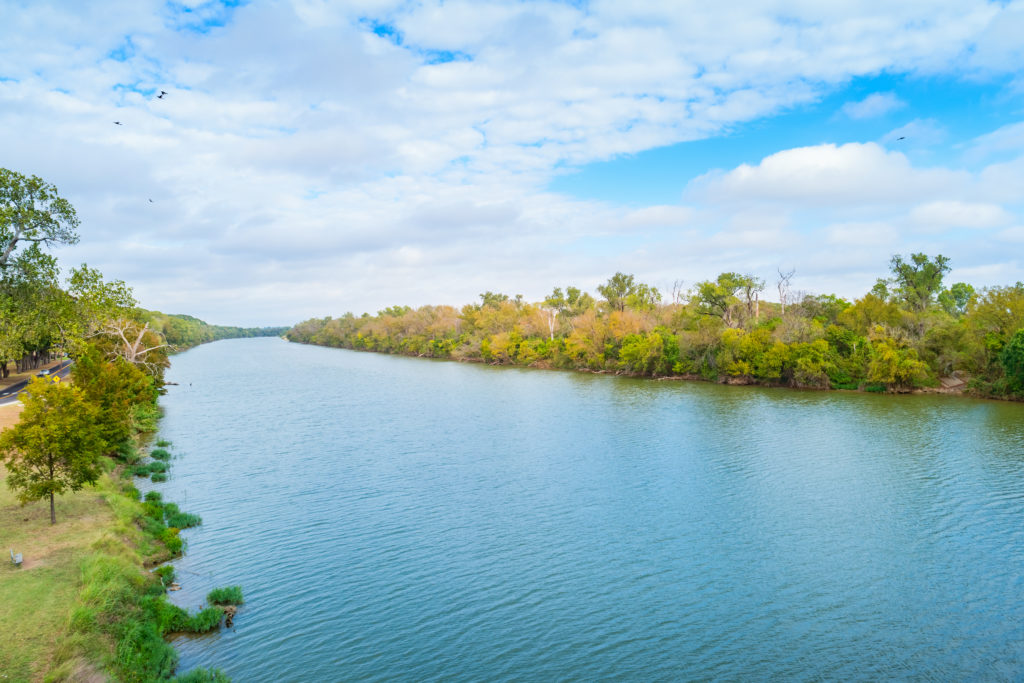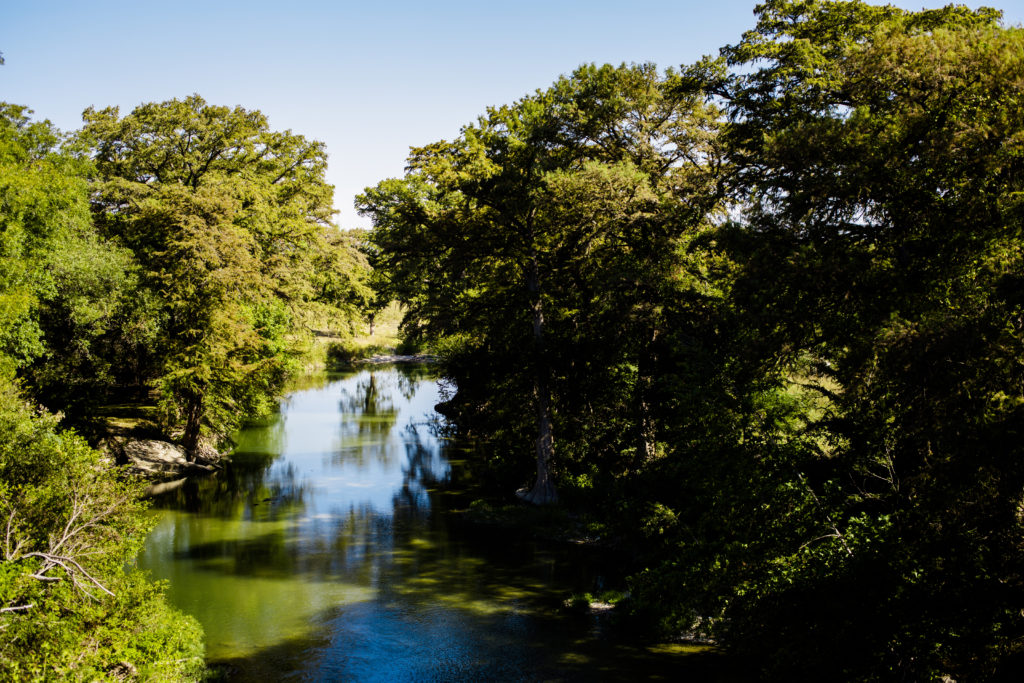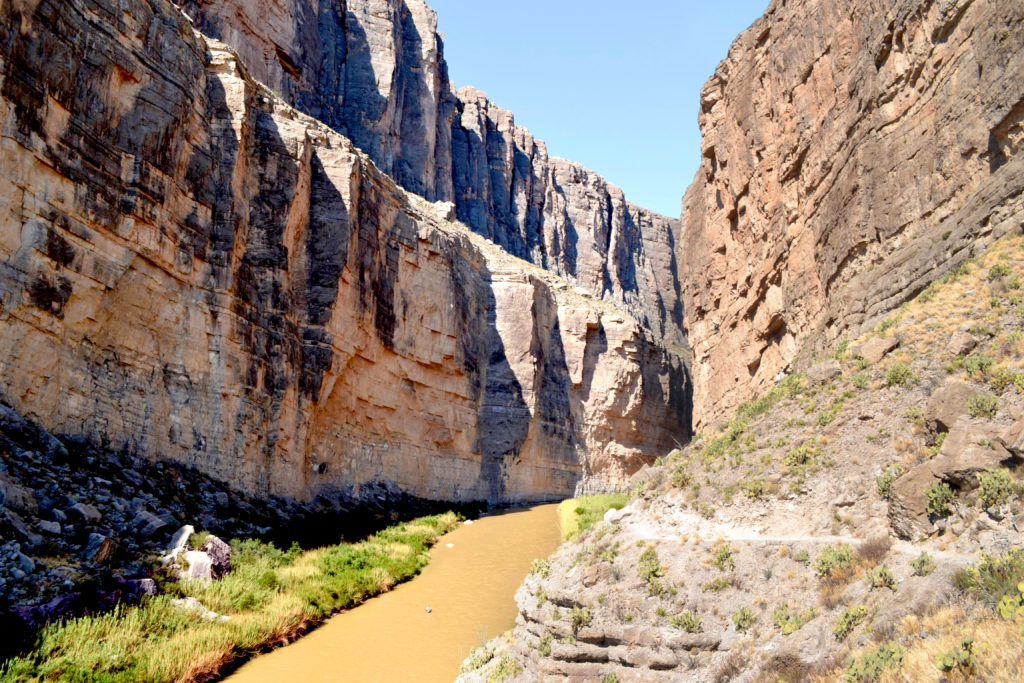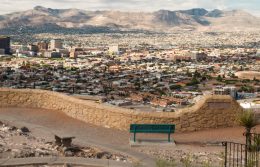Your Map to the Great Texas Rivers
Texas rivers are fickle creatures. In spring, they can swell and overflow their banks, flooding cities and destroying homes. In summer, revelers float on tubes beneath towering pecan trees or perch on banks with rods in hand. After the scorching summer months bake into fall, they can run to a trickle or dry out altogether. Come winter, up in the Panhandle, rivers can freeze, while along the border, adventurers can explore the massive canyons cut by the Rio Grande or search for migrating birds along its banks in the valley all year.
Each Texas river has its own character and may change dramatically as it winds its way through the state. Follow this guide to the longest and most glorious waterways in Texas.
Red River
The 1,360-mile river runs from the Panhandle along the Oklahoma border until draining into the second-largest river basin in the southern Great Plains. Its name comes from the silt of red-hued sedimentary rocks that color its waters. In the early 19th century, the Red River marked the southern border between the United States and New Spain, and it remained so until the Texas Revolution. Today, reservoirs along its course are popular destinations for anglers and boaters.
Canadian River
A tributary of the Arkansas River, the Canadian crosses Texas between New Mexico and Oklahoma through the northern fridge of the Panhandle. The Canadian’s riverbed is shallow and sandy, cutting a narrow trench through the wide-open Plains landscape. Northeast of Amarillo, a dam creates Lake Meredith, a Plains oasis that provides water for a number of Panhandle towns and cities.

Sabine River
Seeping out of the thick woodlands of East Texas, the Sabine River forms the Texas-Louisiana border as it runs its course southward toward the Gulf of Mexico. It eventually spills into Sabine Lake, whose fresh waters help fuel one of the state’s most fecund wildlife estuaries.
Neches River
The Neches River sits at the convergence of several diverse ecological habitats. The U.S. Fish and Wildlife Service thwarted efforts to dam the river by establishing the Neches River National Wildlife Refuge, helping to ensure that much of the river’s course remains in its natural state.
Trinity River
The Trinity River is formed by the flow of the massive North Texas watershed southward toward the Gulf of Mexico. Branches of the river run through Fort Worth and Dallas, which has long dreamed of utilizing the river either as a shipping canal or as a grand urban park. Farther south, the Trinity’s regular flooding feeds farmland in the central part of the state.

Brazos River
The Brazos River runs off the Llano Estacado diagonally through the state before draining into marshes near Freeport. The lower Brazos river valley was a major early settlement site; Texas Independence was declared near its banks. The river also inspired one of the best books ever written about Texas, John Graves’ Goodbye to a River, which recounts the author’s canoe trip down the Brazos in the days before it was dammed. The Brazos remains popular for canoeing, swimming, camping, and fishing.
San Jacinto River
Before European settlers arrived in Texas, Karankawa and Akokisa tribes lived in and around the two forks of the San Jacinto, the river best-known as the site of a critical battle of the Texas Revolution. Today it sits at the center of a major hub of the petroleum industry.
Colorado River
Like the Brazos, the Colorado begins in the Llano Estacado and winds through the Hill Country before emptying into the Gulf of Mexico; during early exploration, the Colorado and the Brazos were often mistaken for each other. Today, the Colorado runs through Austin, where it has been dammed to create Lady Bird Lake.

Guadalupe River
Cutting through some of the most stunning landscapes of the Hill Country, the river was an important water route for Native American tribes, Spanish explorers, and early German settlers. Today, it is one of the most popular Texas rivers for rafting, canoeing, fishing, and tubing.
San Antonio River
Although it’s one of Texas’ more diminutive rivers, the San Antonio played an outsized role in the state’s history. Originating in a series of springs, it flows southward before joining the Guadalupe River near the Gulf of Mexico. It’s best-known as the centerpiece of the popular San Antonio River Walk.
Pecos River
Once considered the starting point of the Wild West, the Pecos cuts a winding course through some of the most arid parts of Texas and, as a result, has attracted life for millennia. Visitors can look for ancient rock art along its shores or simply enjoy the stunning beauty of the long canyons the river carves into the desert as it makes its way to the Rio Grande.

Rio Grande
From the spectacular canyons of Big Bend to the marshy lowlands of the valley, the Rio Grande is the longest river in Texas. Its course gives the state its iconic shape as it forms the southern border of the U.S. The Rio Grande also sustains some of the most diverse and vibrant ecological regions in Texas. It’s an unparalleled spot for canoeing, fishing, camping, and hiking. Look for birds along its banks.
© 2019 Texas Farm Bureau Insurance



